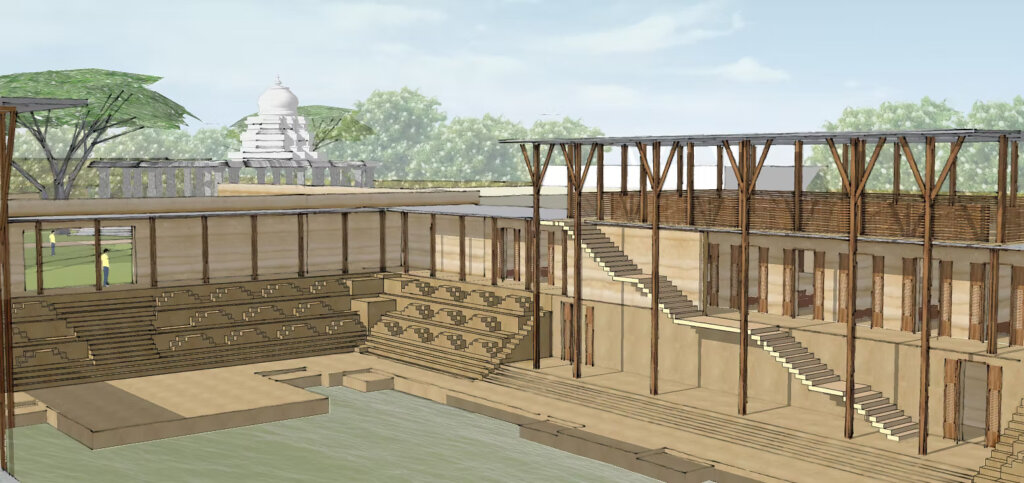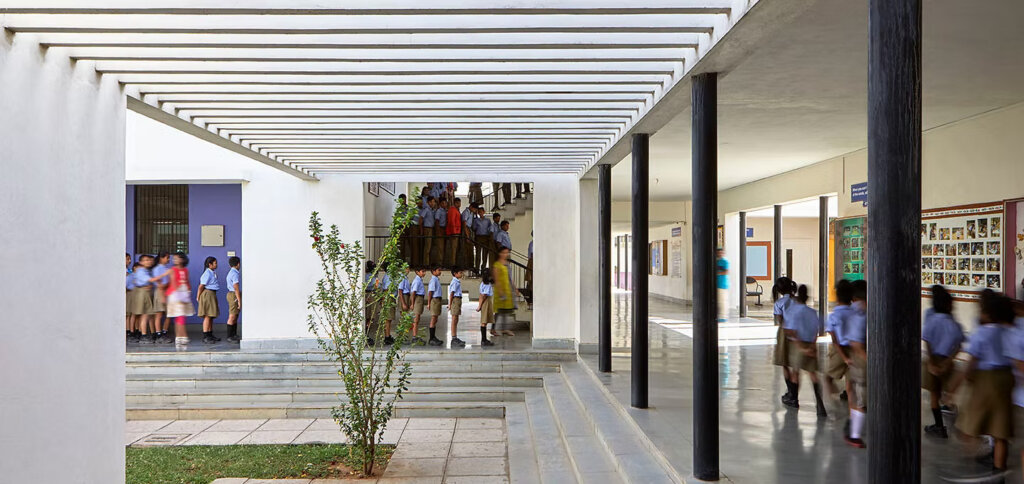In the rapidly evolving world of education, the design of educational spaces plays a pivotal role in fostering an environment that is conducive to learning, creativity, and holistic development. In Mumbai, a bustling metropolis where education is paramount, architecture firms have taken the lead in designing spaces that not only meet functional requirements but also inspire students and educators alike. These architecture firms in Mumbai are transforming educational institutions by integrating modern design principles, sustainability, and advanced technologies to create dynamic and engaging spaces for learning.
The Role of Educational Architects in Mumbai

Educational architects specialize in designing buildings and spaces that cater to the unique needs of educational institutions. These spaces go beyond just classrooms; they include libraries, sports facilities, auditoriums, and common areas that support collaboration, creativity, and a sense of community. Educational architects are skilled at creating spaces that not only accommodate academic activities but also foster a sense of well-being, comfort, and inclusivity.
In Mumbai, where the demand for modern and functional educational infrastructure is ever-growing, educational architects are tasked with designing spaces that can handle the dynamic needs of students and teachers. This includes considerations such as safety, acoustics, lighting, flexibility in design, and accessibility for all.
Key Trends in Educational Architecture in Mumbai

Sustainable Design and Green Buildings
Sustainability has become a key focus for architecture firms worldwide, and Mumbai is no exception. Educational spaces in the city are increasingly being designed with sustainable practices in mind. Architecture firms in Mumbai are incorporating green design elements that not only reduce the environmental impact but also create healthier, more energy-efficient environments for students and teachers. Features like solar panels, energy-efficient HVAC systems, and rainwater harvesting are becoming common in educational institutions across the city.
Sustainable design goes beyond just energy efficiency; it also includes the use of eco-friendly materials, passive cooling techniques, and creating green spaces within the school campus. These elements contribute to reducing the overall carbon footprint while providing a healthier environment for students to learn and grow.
Flexible and Collaborative Spaces
One of the most significant shifts in educational architecture is the move towards flexible learning spaces. Educational architects are now designing spaces that can adapt to various teaching methods and learning styles. This includes open-plan classrooms, modular furniture, and areas that can be reconfigured to suit group discussions, individual study, or collaborative projects.
This trend is particularly important in a city like Mumbai, where the diversity of students and educational needs is vast. By designing flexible learning environments, architecture firms are helping to create spaces that can accommodate a wide range of educational approaches, from traditional lectures to project-based learning and interactive lessons.
Technology Integration in Educational Design
With the rise of digital education and smart learning tools, technology integration has become a cornerstone of modern educational design. Architecture firms in Mumbai are integrating cutting-edge technology into their designs to ensure that educational spaces are equipped to handle the needs of today’s tech-savvy students and teachers.
Smart classrooms, interactive whiteboards, and the use of digital learning tools are becoming common in new educational buildings. Additionally, architecture firms are designing spaces that accommodate online learning and hybrid teaching models, ensuring that students and educators can seamlessly transition between in-person and virtual learning environments.
Emphasis on Student Well-Being
An essential aspect of modern educational architecture is prioritizing student well-being. Educational architects understand the need to create spaces that support mental and physical health, which in turn positively impact academic performance. Well-designed educational spaces promote social interaction, physical activity, and mental relaxation.
Incorporating natural light, ventilation, and access to outdoor spaces is key to promoting well-being in schools and colleges. Green spaces such as courtyards, gardens, and outdoor classrooms allow students to connect with nature and relieve stress during breaks. These design features are particularly crucial in Mumbai, where air quality and urban noise levels can be a challenge for residents.
Safety and Security in Educational Spaces
Safety is a critical factor in designing educational spaces. In a bustling city like Mumbai, where schools are often located in densely populated areas, architecture firms must be particularly mindful of creating safe, secure environments. This includes designing secure entrances, surveillance systems, and safe evacuation routes in case of emergencies.
Moreover, architecture firms are working to ensure that educational spaces are accessible to all, including differently-abled students. This involves creating barrier-free access, elevators, and ramps to ensure that every student can navigate the school or college comfortably and safely.
Incorporating Cultural and Local Context
Mumbai is a melting pot of cultures, and its educational spaces reflect this diversity. Architecture firms in Mumbai are increasingly designing spaces that incorporate local architectural elements, cultural references, and materials that resonate with the community. Whether it’s through the use of traditional materials like terracotta tiles or incorporating local art and design, architects are creating educational spaces that feel connected to the city’s rich heritage while embracing modern functionality.
By paying attention to the cultural context, architects are creating environments that foster a sense of belonging and pride among students. This approach also helps students develop a deeper connection to their surroundings and learn to appreciate the diverse cultural influences that shape their lives.
The Importance of Collaboration Between Architects and Educational Institutions

For educational architecture to be truly transformative, there must be a close collaboration between architecture firms in Mumbai and educational institutions. Schools, colleges, and universities must work closely with architects from the very beginning of the design process to ensure that the space meets their unique needs. Architects, in turn, must understand the vision of the institution and the requirements of the students and teachers who will use the space.
Collaboration ensures that the design process results in spaces that are not only visually appealing and functional but also aligned with the institution’s goals for student development and success. This partnership between architects and educational leaders is key to shaping the future of educational spaces in Mumbai and beyond.
Conclusion
The role of architecture firms in Mumbai in shaping the future of educational spaces cannot be overstated. Through sustainable design, flexible spaces, technology integration, and a focus on student well-being, educational architects are transforming schools and colleges into dynamic environments that inspire learning and creativity. As educational needs continue to evolve, these firms will play a crucial role in designing spaces that foster innovation, collaboration, and success.
If you’re looking for innovative solutions for your educational space, SJK Architects stands out as one of the leading architecture firms in Mumbai. With their experience and commitment to creating spaces that inspire and support learning, they are well-equipped to help shape the educational institutions of tomorrow. Whether you are looking to design a new campus or renovate an existing one, SJK Architects brings a wealth of expertise to the table, ensuring your educational space reflects the needs of the students and the educational community.
